One of the important and interesting applications of Software Define Radios (SDR) is radio direction finding, or simply DF. The most common use case for DF is physically locating an unknown radio emitter of interest. DF can be used to locate illegal transmissions, track assets, help rescue teams to find emergency beacons, etc. Recently, we acquired KrakenSDR for our research projects in our lab. There will be a series of posts about DF but in this post we will share our first DF results with you, which are really promising.
KrakenSDR is a 5-channel SDR that can be used for DF applications. It has some improved features compared to its precedessor, KerberosSDR. This post is about using KrakenSDR with a well-known Single Board Computer (SBC), RaspberryPi.
Installation
In this series, we will use KrakenSDR in fixed-point use case. Later we will post on its use in a vehicle.
- We connected data port of KrakenSDR to USB3.0 USB port on the RaspberryPi.
- We powered both RaspberryPi and KrakenSDR with 5V/10A power adapter.
- All 5 channels are connected to the whip antennas.
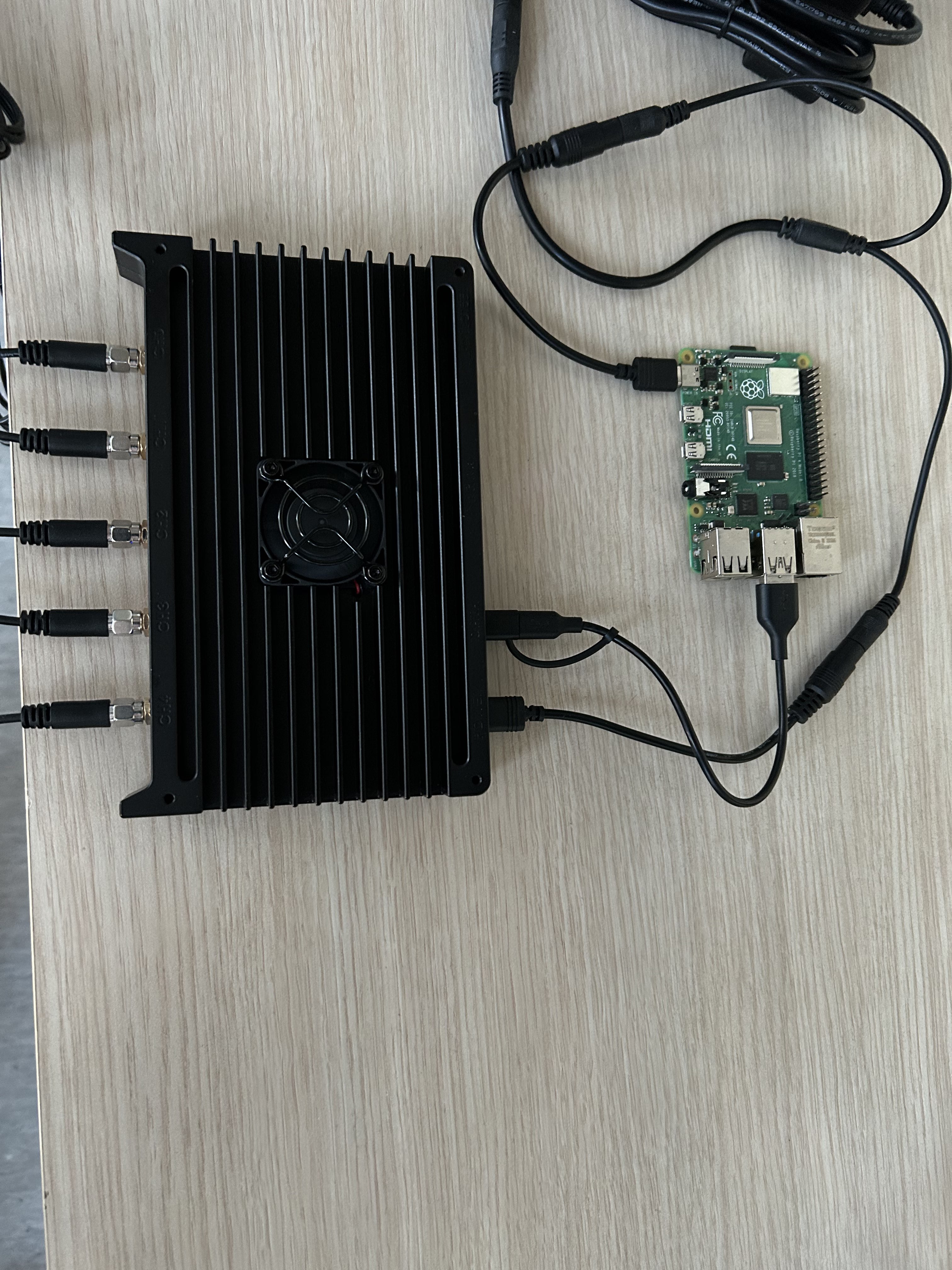
Antenna Array Setup
We referred to antenna array spacing Excel sheet by KrakenSDR in order to correctly place antennas. Later, we printed array spacer. Graphic shows TOP DOWN View and ANT 0 points to the forward direction of the array.
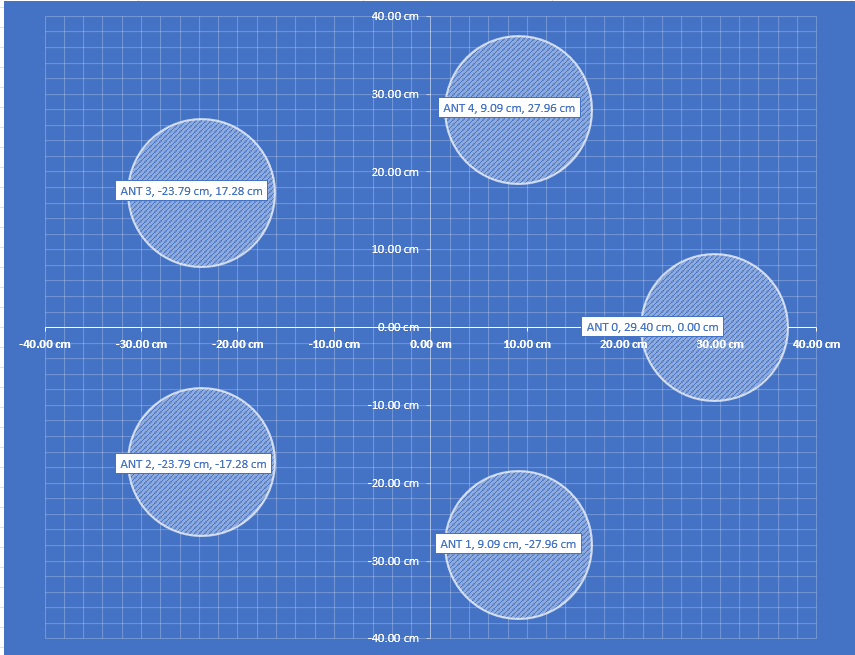
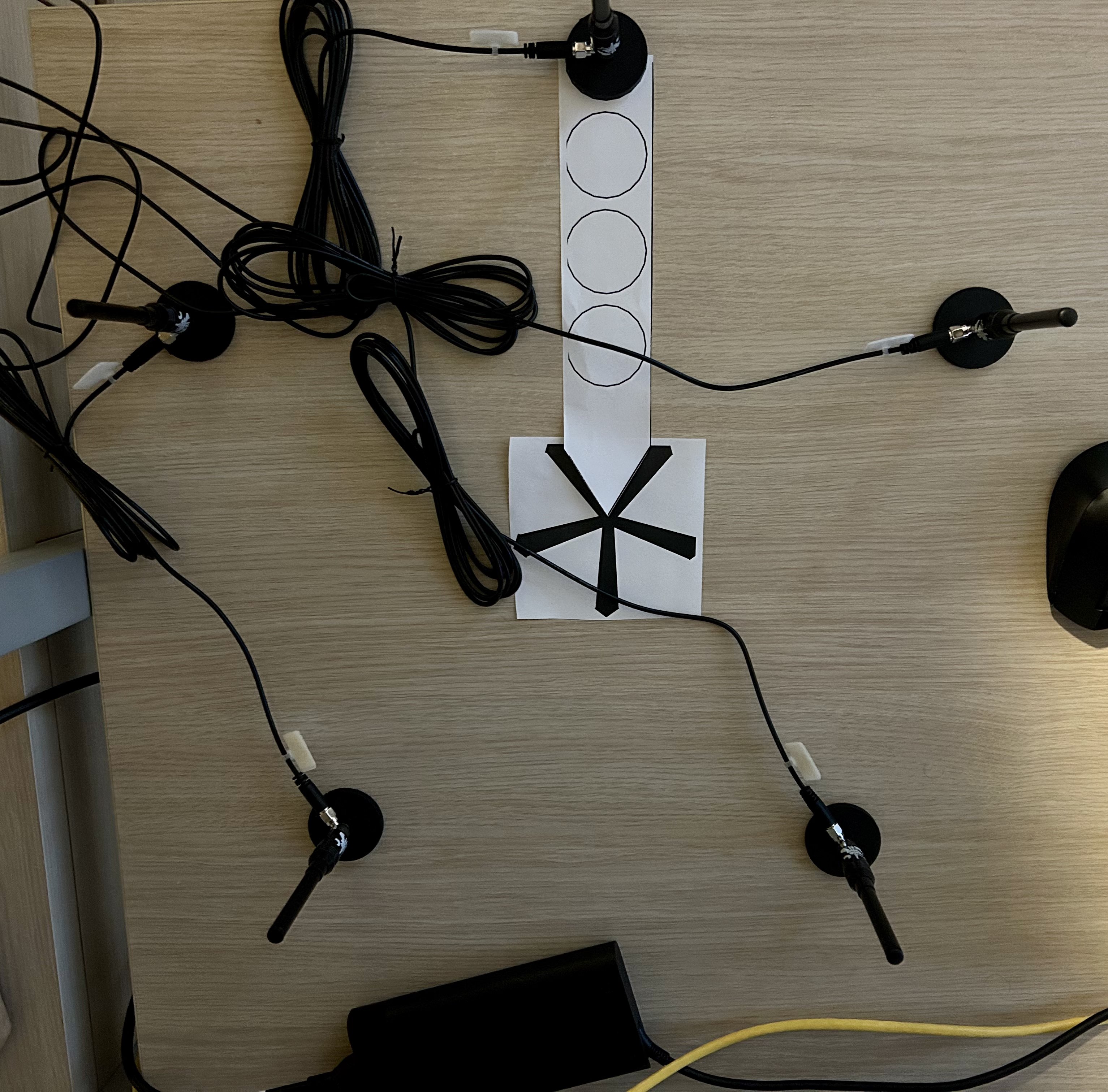
Testing Web Application in Stationary Mode
After writing right image to the SD-card, allow a few minutes for the RaspberryPi to bootup. Since we will not be using Android app at this time, we will leverage offline hotspot created by RaspberryPi. Using hotspot, we will connect to a web application to control the system. We set the frequency to 433MHz because we will be testing with a simple remote key used to open garage doors. This is an ISM-band device transmitting on-off signals (OOK). Here is the keyfob we are using for the tests.
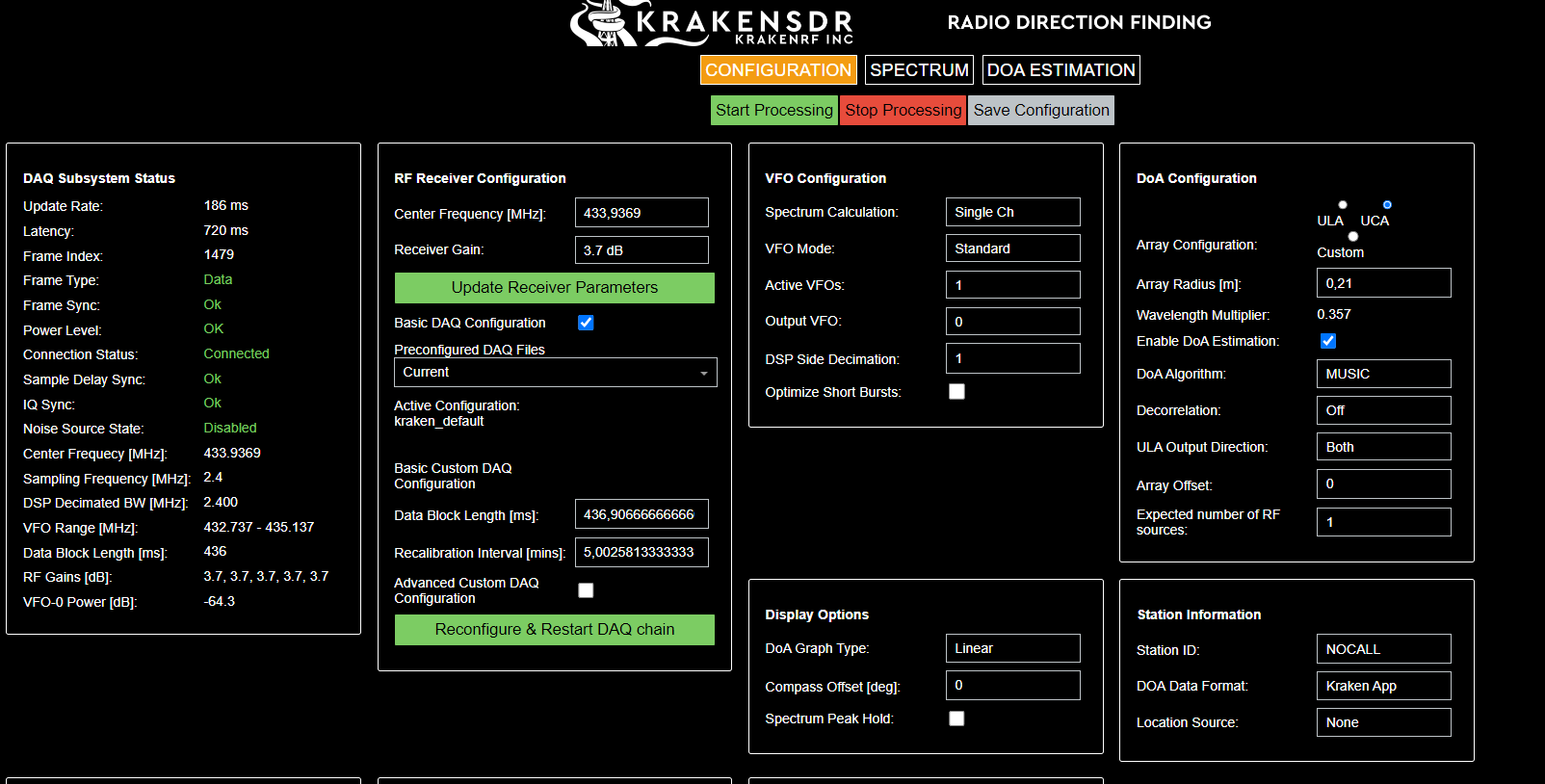
There are many different DF methods, however KrakenSDR uses what is called Correlative Interferometry. In this method phase difference is used to determine the direction of the signal of interest. When we press the button on the remote key, the spectrum page shows the live spectrum display and waterfall.

After setting Polar graph type, we tested DF system at specific angles and obtained accurate results as shown in below screenshots.
| 0 Degree | 90 Degrees |
|---|---|
 | 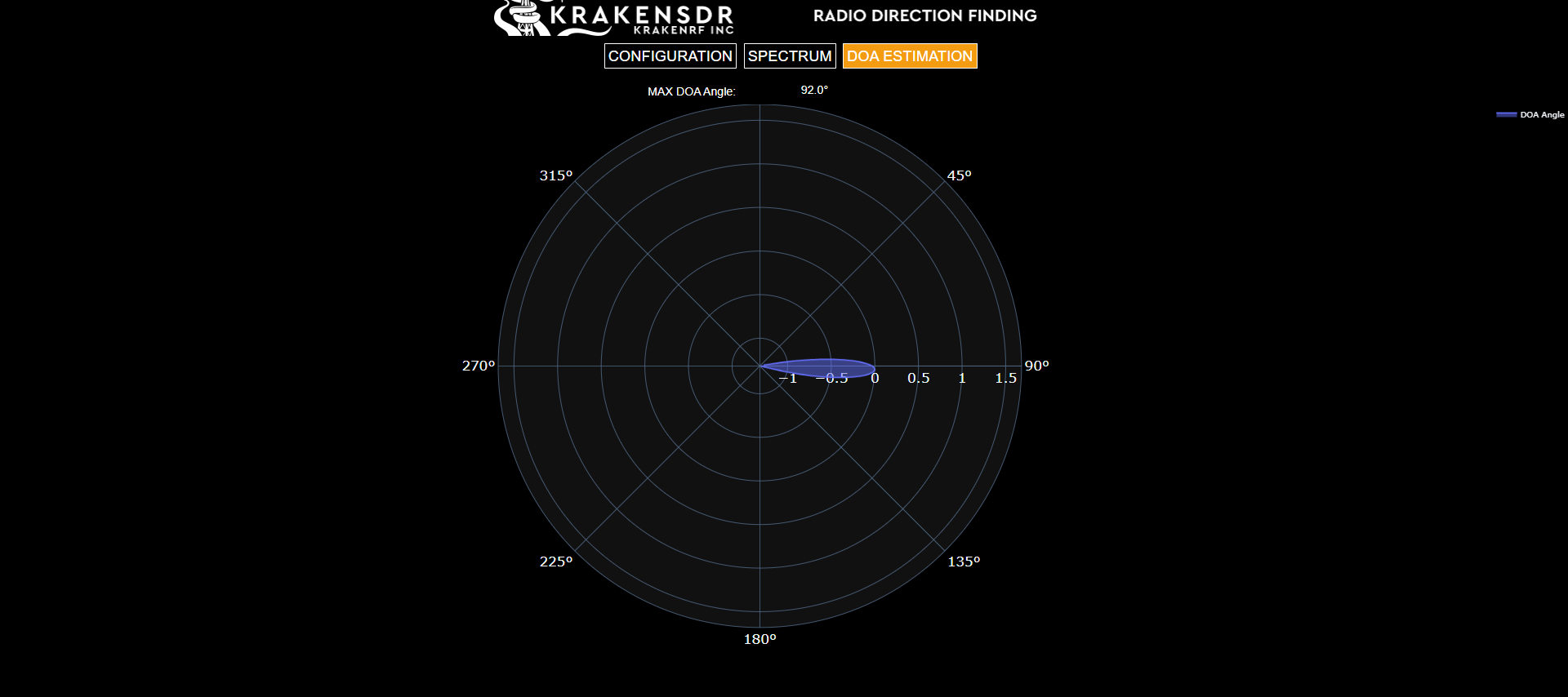 |
| 180 Degrees | 270 Degrees |
|---|---|
 |  |
We will be posting on DF with other tools and use cases. So, stay tuned for updates.

